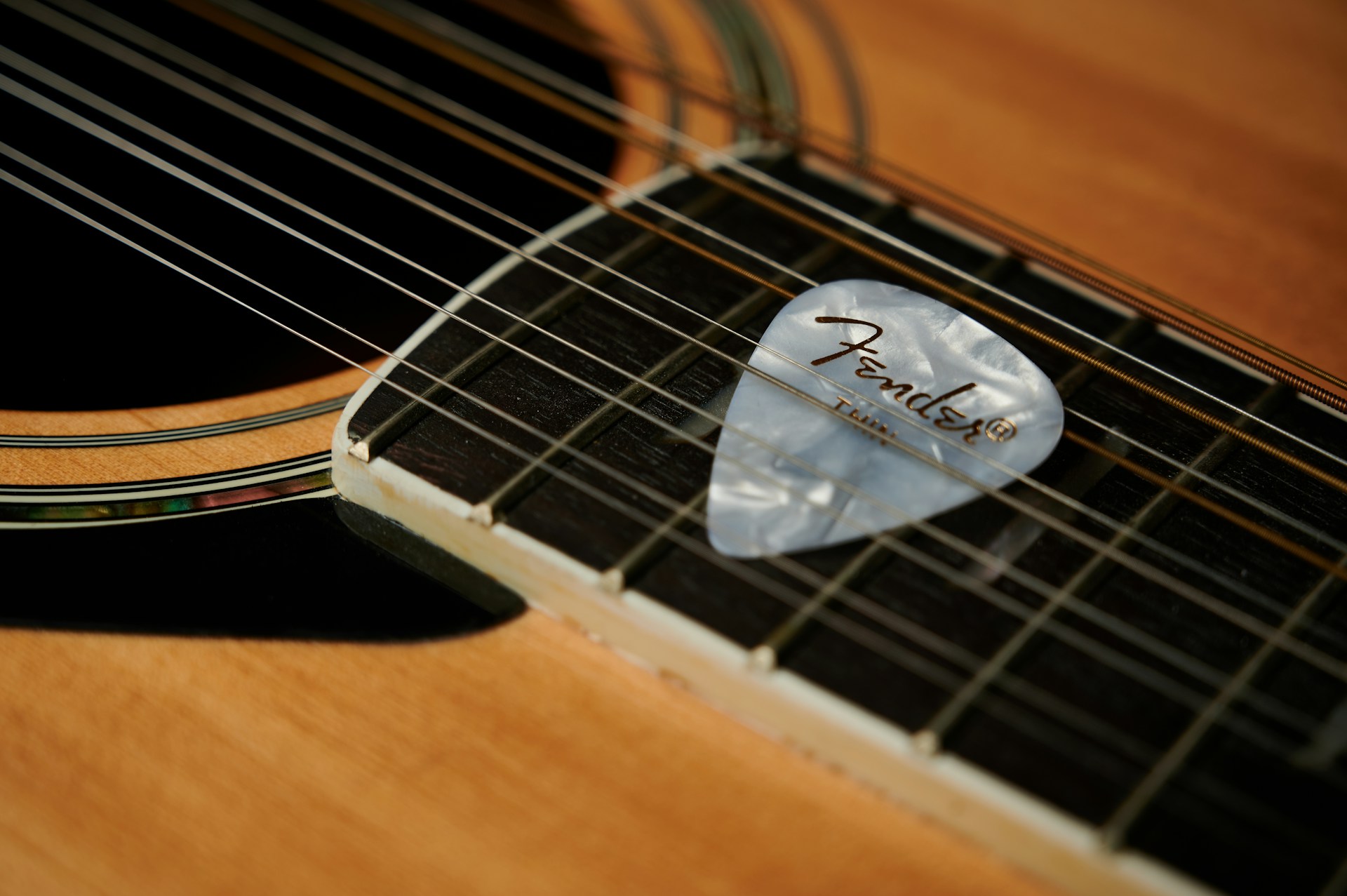Choosing the Right Guitar Pick
As any seasoned guitarist can attest, the quest for tone is an eternal pursuit. This pursuit is shaped by factors ranging from equipment selection to picking techniques.
Amidst the tools at a guitar player’s disposal, the humble guitar pick plays a pivotal role in influencing the sound produced and the feel and dynamics of your playing.
It’s important to know how guitar picks impact your overall tone. This guide discusses the nuance of different types of guitar picks, offering insights to help you refine your sound.
Thickness: The Foundation of Tone
At the heart of pick selection lies the consideration of thickness. A pick’s thickness, measured in millimeters (mm), dictates its flexibility and rigidity. It shapes the attack and response of your playing.
Thin picks (0.5mm to 0.7mm) imbue your sound with a gentle, fluttering quality ideal for strumming and rhythm playing.
Conversely, thicker picks (0.8mm to 1.5mm) provide more control and precision, making them great for lead lines and aggressive picking styles.
Don’t be afraid to experiment. Learn how different thicknesses change the balance between flexibility and stability.
Material Matters: Craft Your Sound with Intention
Beyond thickness, a pick’s material composition greatly impacts its tonal characteristics and tactile feel.
Traditional picks are made with celluloid. They evoke a warm, vintage tone, while their nylon counterparts offer a brighter, more articulate sound. Delrin, or Tortex, is a common choice for its durability and balanced tonal response.
For those seeking unconventional textures, picks crafted from metal, stone, or wood present unique possibilities. Regardless of your pick selection, know that it will color your playing with a distinct tonal signature.
Shape: Form Follows Function
In pick selection, shape plays a pivotal yet often overlooked role in shaping your playing experience.
From the classic teardrop to the sleek contours of the jazz pick, each shape imparts subtle variations in grip and attack, influencing the fluidity of your picking technique.
Try different pick shapes to learn which aligns with your playing style and ergonomic preferences. Finding your ideal pick shape can alter how you approach the instrument.
Texture: Grip and Glide
Maintaining a secure grip on your pick is necessary in the heat of performance. Picks adorned with textured surfaces offer enhanced traction, preventing slippage and ensuring control over your instrument.
Whether shredding through blistering solos or hybrid picking intricate melodies, a textured pick provides the tactile confidence necessary to unleash your musical vision with unwavering conviction.
Personal Preference: The Only Thing That Actually Matters
Amidst the various considerations of thickness, material, shape, and texture, it’s imperative to remember that pick selection is ultimately a deeply personal matter.
Your ideal pick isn’t merely dictated by technical specifications but by the intangible elements of feel, sound, and connection.
Trust your instincts and let your ears guide you toward the type of guitar pick that resonates with your ears and playing style.
Application: Matching Picks to Musical Identity
As you explore different musical genres and playing techniques, choose a guitar pick that suits the sound you’re trying to get.
For those who play rock and metal, a thick pick provides the stability to cut through dense arrangements with authority.
Conversely, certain acoustic guitar players may prefer a thinner pick’s airy, percussive sound. It’s not uncommon for flatpickers to use a large, thick, triangular guitar pick.
It depends on the context. Whatever your stylistic preference, know that your choice of pick will influence the character, tone, and feel of your playing.
Budget: Some Picks Are Pricier Than You Might Think
In trying different guitar picks, know that a hefty price tag isn’t necessary. While some premium picks offer craftsmanship and specialty materials, many affordable options offer performance without breaking the bank. It’s not necessary to spend a lot on guitar picks. But you can if you like what they have to offer.
What Guitar Picks Do Notorious Players Use?
Not that it matters what pick other players use, but here are a few examples to help you understand how playing style can dictate pick choice. Ultimately, players gravitate toward what’s comfortable and available.
Jazz III Picks
Jazz III picks, known for their small size and pointed tip, are popular among many rock and metal guitarists for their precision and control. Artists like John Petrucci (Dream Theater) and Alex Lifeson (Rush) are known to use Jazz III picks.
Dunlop Tortex Picks
Dunlop Tortex picks, made from a durable material, are favored by numerous guitarists across different genres. Billy Corgan (The Smashing Pumpkins) and James Hetfield (Metallica) are among the musicians known to use Tortex picks.
Fender Medium Picks
Fender Medium picks, made from celluloid or similar materials, are popular among players for their versatility. Many classic rock guitarists like Eric Clapton and Jimmy Page have been associated with Fender Medium picks.
Bluechip Picks
Blue Chip picks have garnered acclaim from various guitarists for their exceptional quality and performance. Renowned acoustic musicians such as Tony Rice, Molly Tuttle, Bryan Sutton, David Grier, and Andy Wood are among those who publicly endorse and use Blue Chip picks. They are on the pricier end of the spectrum.
The Coda
Every note is an opportunity to communicate with the listener. Choosing the right guitar pick will help you sculpt your tone and shape your sound.
Pick selection is one of the cheapest ways to change your tone. Knowing your options will help you make informed decisions based on the demands of the musical moment.
Want to Take Guitar Lessons from a Nashville Pro?
Green Hills Guitar Studio is located in the heart of Nashville, TN. We offer online lessons accessible from anywhere in the world. Our pro instructors are ready to guide you toward guitar mastery.
Contact us today to schedule your personalized guitar lessons and learn how to get the most out of your practice sessions.






